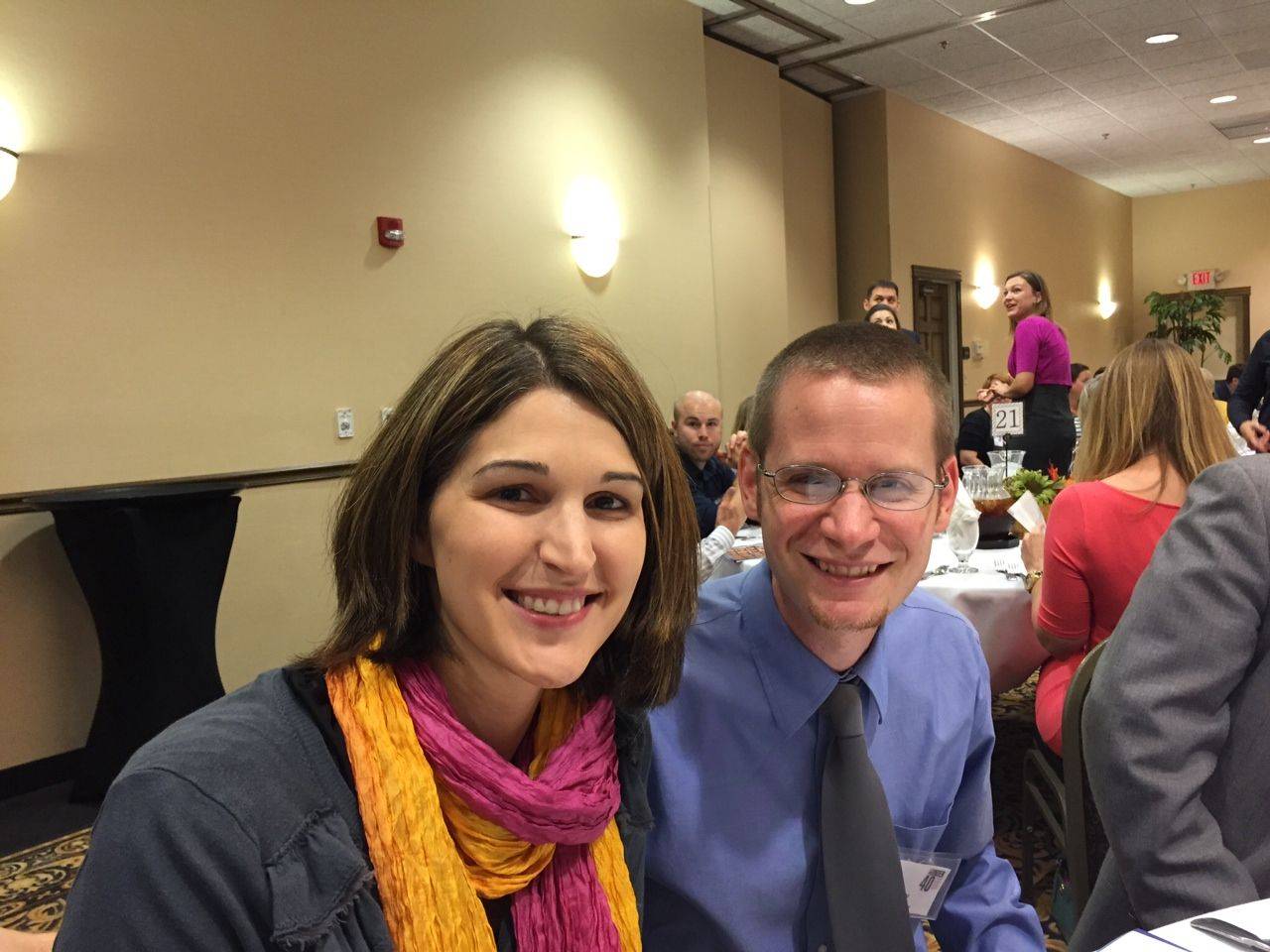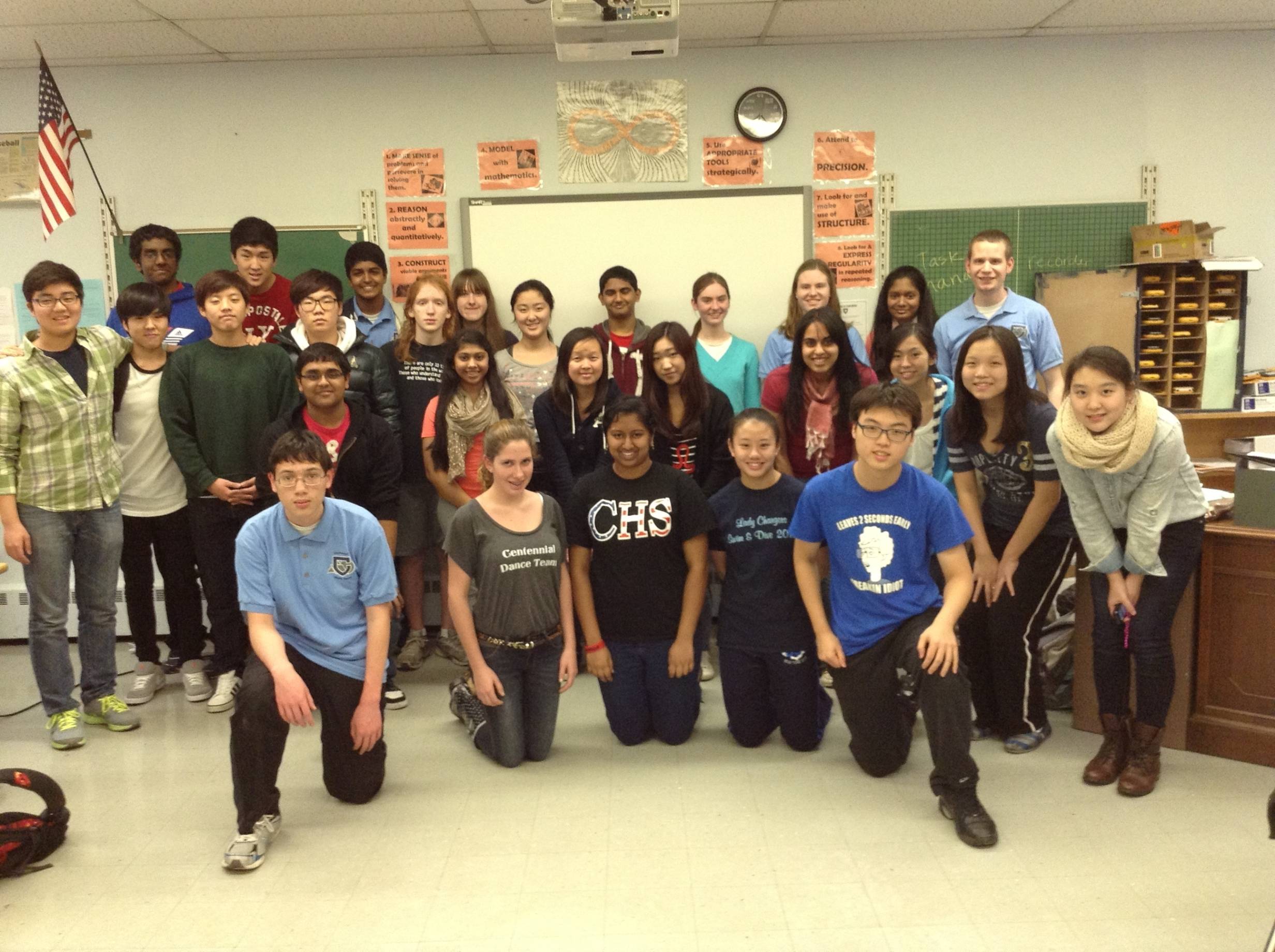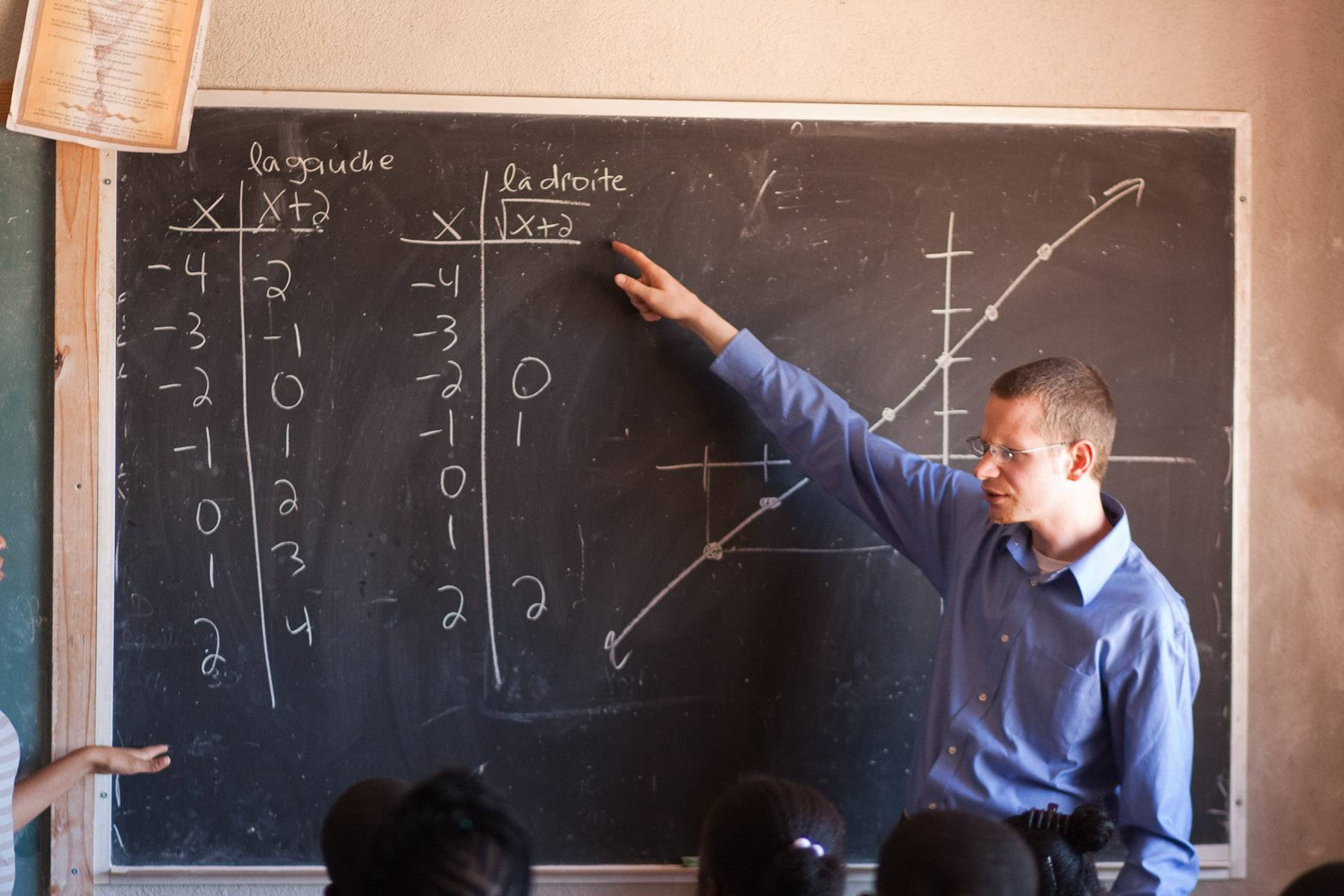This month, Centennial High School teacher Jay Hooper was named one of Central Illinois Business Magazine’s Forty Under 40. The award recognizes professionals under the age of 40 in a range of fields for their professional achievements and community commitment.
Hooper, a mathematics teacher and department chair, has been teaching at Centennial for ten years. He currently teaches Statistics, AP Statistics, and Algebra 2. I talked to him about his teaching style and the culture of education in Champaign-Urbana.
Smile Politely: Why did you go into teaching?
Jay Hooper: When I was doing my undergraduate in physics at the U of I, I had the opportunity to work a few engineering jobs. I enjoyed the work, but at some point I decided that I wanted to invest in people rather than in a company or a product. That realization made me switch my focus to education. As a student at the U of I, a lot of the learning was done through exploration and engaging with interesting problems. I appreciate that philosophy because I really like to be able to apply what I’m learning. I think students like that, too. Students are hungry to learn about how concepts can be applied.
SP: How would you describe your teaching style?
Hooper: Especially with statistics, I try to make sure we get our hands dirty by actually measuring real data. We don’t just work from the book. We work with data we have collected. I also try to use technology that I know is used outside of high school so that students can see the value of what we’re doing. And I like to give students time to work with each other. They need to be able to talk to each other and ask questions of each other. I have found that students learn a lot better when they have the chance to discuss things. It helps that I try to teach to every student. If a student is struggling, or if a student wants to get ahead, I have a library of videos that they can watch to review or get ahead. Having the videos means that students can come to class prepared and ready to engage.

Hooper with his wife Molly Hooper at the Forty Under 40 banquet.
SP: Tell me more about these videos. Why and how did you create them?
Hooper: I began making the videos when I was teaching Calculus, which was maybe five years ago. When I began developing my own materials for that course, I realized I didn’t want to just stand up in front of the class and lecture all day. That didn’t sound interesting to me as a teacher. I wanted to find a different way to teach Calculus, and I wanted my students to be able to discuss mathematics with their fellow students. So I made a library of videos that taught all the lessons for the semester. The students watched the lesson outside of class so they could engage with each other in class. I would still do some lecturing in class, but it wasn’t the focus. The following year I decided to use the same approach for teaching Statistics, so I made videos for that class as well.
SP: How would you characterize Centennial?
Hooper: I can speak to the culture of the math department. We’re very collegial. We work together on almost everything: we write common assessments together, we work on lesson plans together, we bounce ideas off each other. It’s a great environment to work in.
Of course, Centennial is not a perfect school, but I respect that there are real conversations taking place here. There are a lot of good ideas that are being tried and tested. There are really big issues concerning education that are happening across the country, and we’re a school that is trying to solve those problems by trying new approaches.
SP: How does living in a university town affect high school education in C-U?
Hooper: It’s hard to miss the impact of the university. Some of our students’ parents are professors at the U of I, for example, and they bring a wealth of perspective to our school. They might be able to present a view other students haven’t considered because of a conversation they overheard at home. The university is really a community resource in that sense.
There are also a number of options to earn college credit here, which is something that makes high school education in C-U unique. Students can take over a dozen college classes for credit. You can almost choose a field to major in as a high school student now.
SP: What do you think about how students are encouraged to specialize and professionalize at younger and younger ages now?
Hooper: It can be complicated. We have opportunities, but they can also cause incredible pressure. I think that if we do anything as a school, it should be to instill a love of learning in students. I encourage my students to think about taking college classes less as an opportunity to find a major than to take general education courses that could apply to a four-year degree. If you think of those courses as general education courses, you can take advantage of the opportunity without declaring what you want to do for the rest of your life.
I also think learning for the sake of learning is so important. In one of my roles at Centennial, I co-coach the math team with another colleague. One of my goals is to help my students enjoy recreational mathematics. I would love to be able to instill a love of what might be called recreational mathematics — doing math just because it’s interesting.

Hooper’s 2013 Math Team.
SP: You mentioned the national conversation on education. How do you hope the education system changes to address that conversation?
Hooper: In many ways, we look to the education system to solve all of our problems. Some problems can be solved in schools, but some are beyond the education system. Now, as a teacher, you almost by default need to function as a social worker. I have no training as a social worker, but in some cases I may be one of the only positive role models in some of my students’ lives.
Another thing is that we’re in the middle of a smartphone boom. The number of people who walk around with a computer in their pockets is incredible, but many of our schools — and Centennial might be included — aren’t using those technologies in ways that they could. I think that’s something that needs to be addressed in the upcoming decade. Many students have access to tech, so we need to think about how technology can transform our teaching.
SP: What are your goals for your teaching? How do you think it will continue to change?
Hooper: For me, teaching is a creative outlet. I love to create, think, and problem solve. I almost never do the same thing three years in a row. One thing I’m thinking a lot about now is differentiation. I want to be able to meet the needs of all students. One group I want to be able to push is the students that understand concepts really quickly. I’ve done a good job reaching the masses and getting them where they need to be, but there are some I can push even further.
I also want to use more technology in my classroom. There is an initiative in our district to have a one-to-one ratio of technology to students — one device per student. My approach to teaching would be different if we achieve that goal. We would be able to do more collaborative projects, for example. I could see myself as an instructor moving to a problem-based learning model. According to problem-based learning, if students are presented with an authentic, interesting problem, and they have to collaborate to solve it, that’s going to push and engage them. Technology would allow my students to solve bigger and more interesting problems.
SP: What advice do you have for new and aspiring educators?
Hooper: One of the things I really value is the idea of being a lifelong learner. If you’re going to be a teacher, you have to enjoy learning. I encourage people to dive deep into their fields and enjoy what they’re able to get out of them.
Another piece of advice would be to remember to see the value in your students. Know you’re making an impact and you matter to them. Hopefully that perspective can help you move forward and make decisions that are in the best interest of your students.








